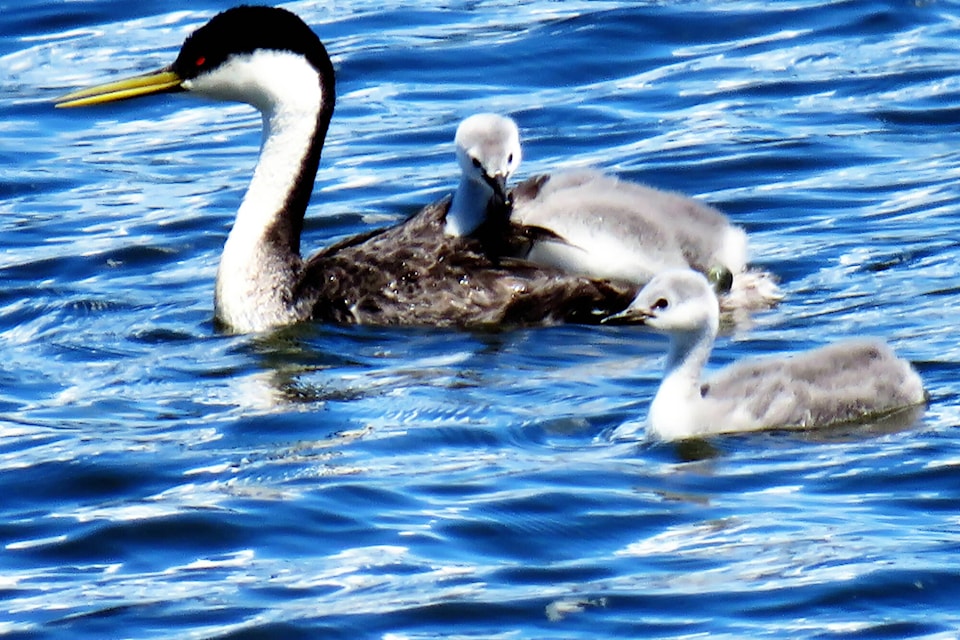By John G. Woods
Special to the Observer
With so much negative news these days, I’m happy to report that our colony of Western grebes on Salmon Arm Bay appears to be doing very well.
In fact, the highest numbers of adults and young ever recorded were spotted on the Bay this year!
On behalf of the Shuswap Naturalist Club, local biologist Dianne Wittner counted 334 adults and 151 young on Aug. 15.
This count was near the end of the time that the baby grebes were dependant on their parents while still young enough to be distinguished from adult birds.
The combined total of 485 adult and baby grebes is the highest number since Wittner took over the annual counts in 2016, and the highest of any counts going back to the 1960s.
Western grebes have specific nesting requirements that are found in very few places in this province.
They build their floating nests in aquatic and emergent vegetation.
Therefore, suitable shorelines and ice-free periods to allow this type of vegetation growth are essential.
The grebes also must have an abundant supply of small fish to feed their young.
Adjacent deeper water is used for foraging and resting after the young are born.
Baby grebes can swim as soon as they hatch but hitch rides on the backs of their parents whenever they can.
And most importantly in our modern world, Western grebes need protection from human disturbance.
While we have the luxury of seeing Western grebes everyday during their nesting season and have wharf-side seats to watch their magnificent courtship dances, this species nests in only a few other locations in British Columbia.
This is a nod to the very special nature of Salmon Arm Bay and the undying efforts of local conservationists.
Read more: Column: Shuswap winters brighten with the song of black-capped chickadees
Read more: Column: Latest count shows healthy ring-billed gull population in Salmon Arm
Starting as a committee in 1988, then crystalizing as the Salmon Arm Bay Nature Enhancement Society (SABNES), this local initiative partnered with Nature Trust of British Columbia to acquire lands to protect critical shoreline areas of the Bay and to limit human disturbance in the nesting areas.
Their most obvious actions were the placement of boat exclusion zones marked by conspicuous white buoys you can see from either side of the wharf.
From April 15 to Aug. 15, no boating is allowed inside the markers to avoid disturbing the nesting grebes.
Although we can take a moment of pride in our collective efforts to protect the grebes, as Wittner observes at the end of her 2022 report, “It is important that we continue to be vigilant in caring for the foreshore.”
newsroom@saobserver.net
Like us on Facebook and follow us on Twitter
